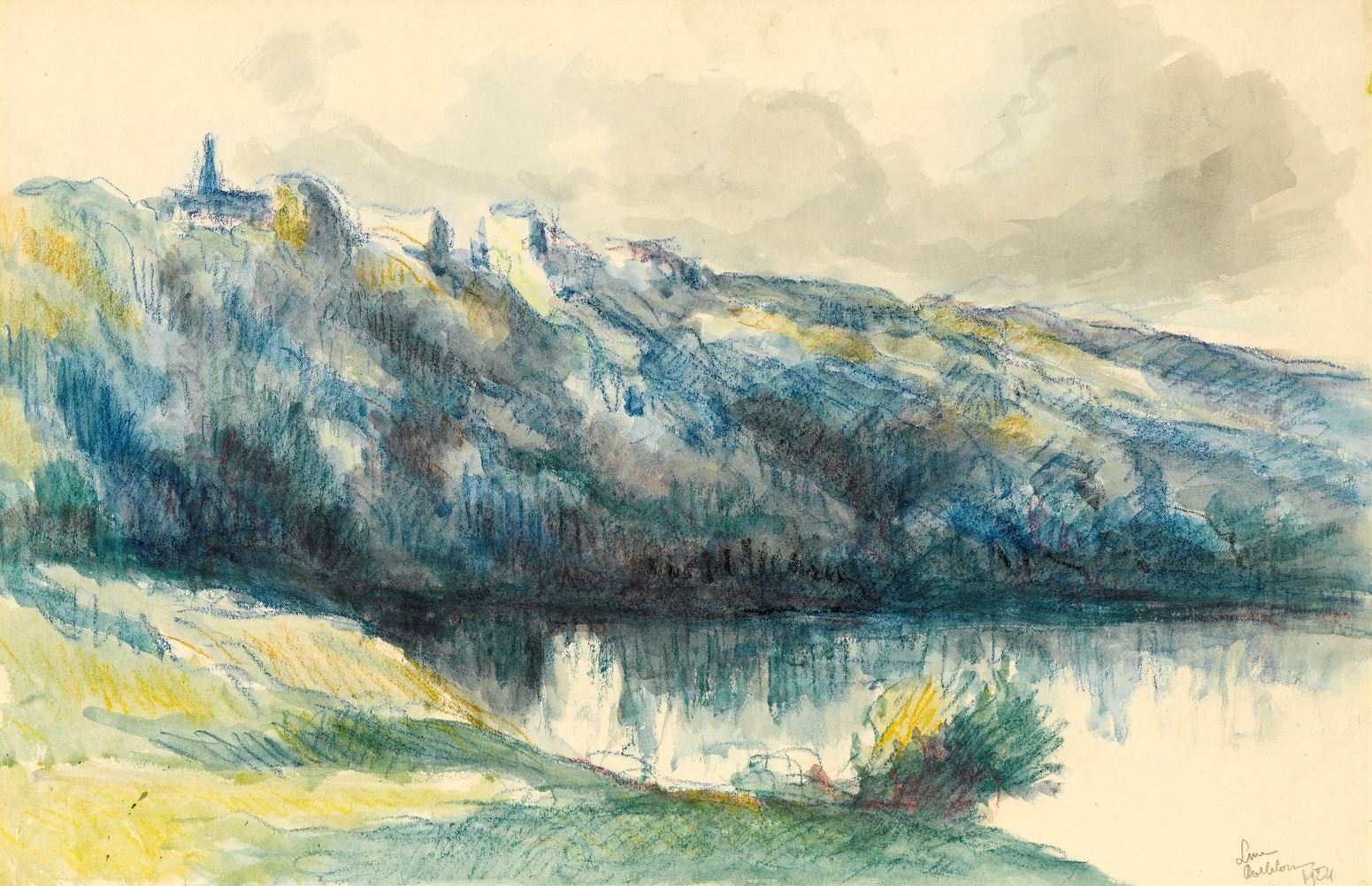Maximilien LUCE
(Paris 1858 - Paris 1941)
The Seine at Rolleboise
Sold
Pastel and watercolour on paper, laid down.
Signed, dated and inscribed Luce / Rolleboise / 1924 at the lower right.
Numbered 63 twice and inscribed Maximilien Luce No 1834 on the old backing board.
317 x 495 mm. (12 1/2 x 19 1/2 in.)
ACQUIRED BY THE NATIONAL GALLERY OF ART, WASHINGTON, D.C.
Signed, dated and inscribed Luce / Rolleboise / 1924 at the lower right.
Numbered 63 twice and inscribed Maximilien Luce No 1834 on the old backing board.
317 x 495 mm. (12 1/2 x 19 1/2 in.)
ACQUIRED BY THE NATIONAL GALLERY OF ART, WASHINGTON, D.C.
Luce first visited the village of Rolleboise, at a bend on the river Seine between Mantes and Bonnières, northwest of Paris, in 1917. He had discovered the village through the painter Alexis Veillet, and rented a room in the town, from where he would often visit his friend Claude Monet at Giverny, not far away. In 1920 he purchased a house just below the church at Rolleboise, as Carol Heitz has noted, ‘on a hillside sloping down gently to the Seine, a most pleasant and peaceful spot...This is where Luce spent the happiest years of his life.’ Luce produced numerous vibrant paintings of the countryside around Rolleboise and the valley of the Seine, painted with great sensitivity. The artist died in Paris and is buried at Rolleboise.
Drawn in 1924, this large and vibrant watercolour is characteristic of Luce’s confident draughtsmanship. The view depicts the village and church of Rolleboise, perched above a bend in the Seine.
Drawn in 1924, this large and vibrant watercolour is characteristic of Luce’s confident draughtsmanship. The view depicts the village and church of Rolleboise, perched above a bend in the Seine.
Born in the Parisian neighbourhood of Montparnasse, Maximilien Luce displayed a lifelong interest in the depiction of the daily life of the working-class city folk he grew up with. Trained initially as a wood-engraver, he took up landscape painting in the late 1870’s. Although best known for his work as a Neo-Impressionist painter, Luce often preferred urban subjects to the landscape views produced by such colleagues as Camille Pissarro and Paul Signac. Like Signac and Henri-Edmond Cross, Luce continued to work in a Neo-Impressionist, or pointillist, manner for many years after the death of the group’s leader Georges Seurat, in 1891. He exhibited with the Neo-Impressionist artists at the Salon des Indépendants, and also took part in the exhibitions organized by Les XX in Brussels in 1889 and 1892. His strong left-wing political convictions and hostility towards the authoritarianism of the Second Empire also found expression in much of his art, and particularly in his graphic work, which included illustrations for several anarchist and subversive broadsheets, including Le Père Peinard, Le Chambard and Le Temps Nouveau.
A member of the French anarchist movement, Luce was briefly imprisoned as a political activist in 1894. From about 1895 onwards, and partly under the influence of Camille Pissarro, Luce began to move away from the Neo-Impressionist manner. He painted a number of urban views, in particular scenes of Notre-Dame, as well as depictions of men at work, rural landscapes and a handful of splendid portraits of fellow artists. Luce continued to exhibit his work regularly, with a series of one-man exhibitions at such Parisian galleries as Durand-Ruel, Druet and Bernheim-Jeune. His work was also shown in Germany, Belgium and Switzerland.







